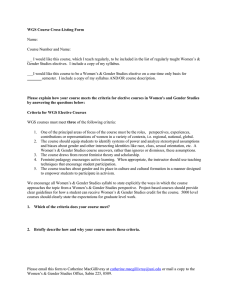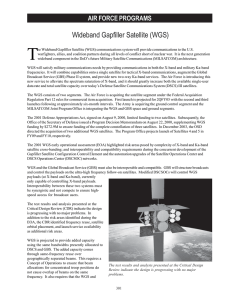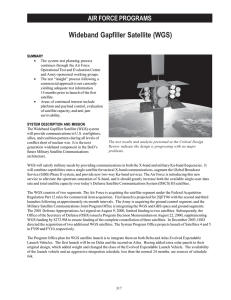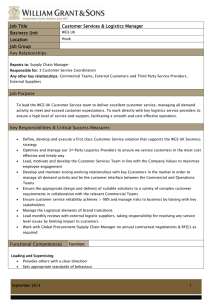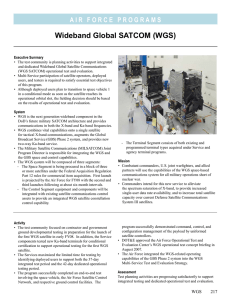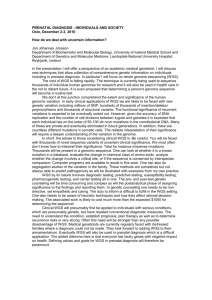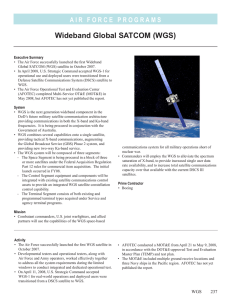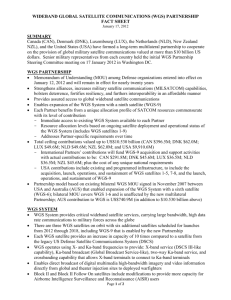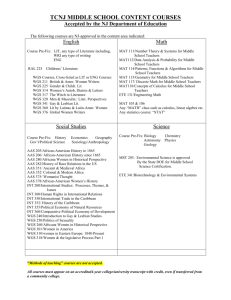Wideband Gapfiller Satellite (WGS)
advertisement
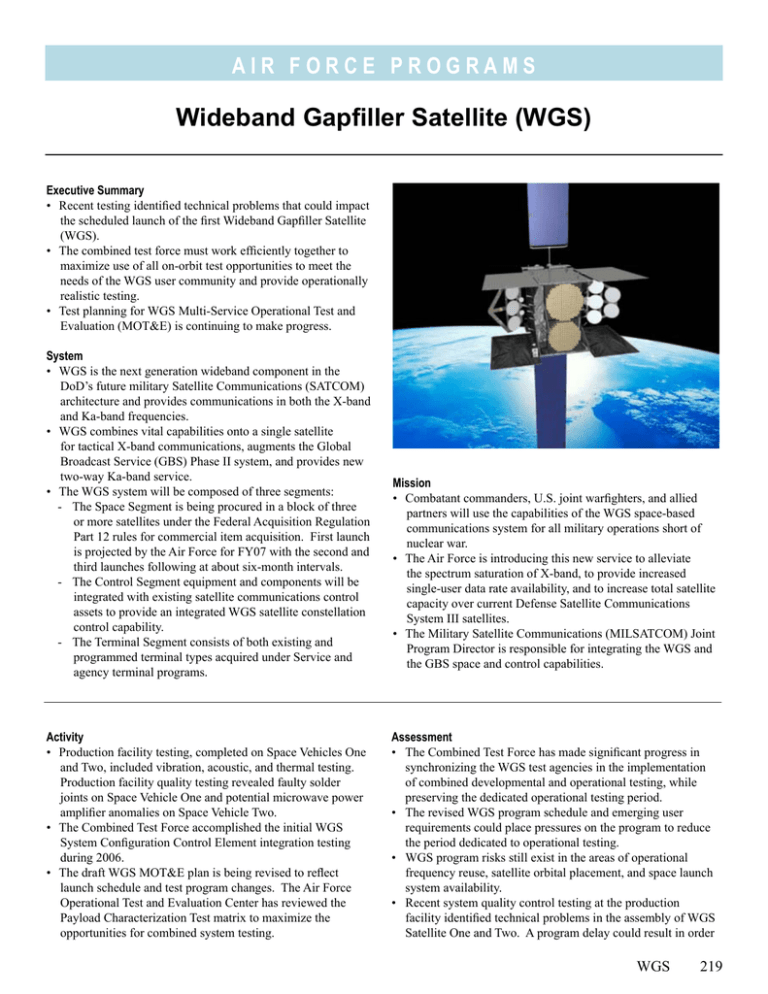
A i r F o r c e P RO G R A M S Wideband Gapfiller Satellite (WGS) Executive Summary • Recent testing identified technical problems that could impact the scheduled launch of the first Wideband Gapfiller Satellite (WGS). • The combined test force must work efficiently together to maximize use of all on-orbit test opportunities to meet the needs of the WGS user community and provide operationally realistic testing. • Test planning for WGS Multi-Service Operational Test and Evaluation (MOT&E) is continuing to make progress. System • WGS is the next generation wideband component in the DoD’s future military Satellite Communications (SATCOM) architecture and provides communications in both the X-band and Ka-band frequencies. • WGS combines vital capabilities onto a single satellite for tactical X-band communications, augments the Global Broadcast Service (GBS) Phase II system, and provides new two-way Ka-band service. • The WGS system will be composed of three segments: - The Space Segment is being procured in a block of three or more satellites under the Federal Acquisition Regulation Part 12 rules for commercial item acquisition. First launch is projected by the Air Force for FY07 with the second and third launches following at about six-month intervals. - The Control Segment equipment and components will be integrated with existing satellite communications control assets to provide an integrated WGS satellite constellation control capability. - The Terminal Segment consists of both existing and programmed terminal types acquired under Service and agency terminal programs. Activity • Production facility testing, completed on Space Vehicles One and Two, included vibration, acoustic, and thermal testing. Production facility quality testing revealed faulty solder joints on Space Vehicle One and potential microwave power amplifier anomalies on Space Vehicle Two. • The Combined Test Force accomplished the initial WGS System Configuration Control Element integration testing during 2006. • The draft WGS MOT&E plan is being revised to reflect launch schedule and test program changes. The Air Force Operational Test and Evaluation Center has reviewed the Payload Characterization Test matrix to maximize the opportunities for combined system testing. Mission • Combatant commanders, U.S. joint warfighters, and allied partners will use the capabilities of the WGS space-based communications system for all military operations short of nuclear war. • The Air Force is introducing this new service to alleviate the spectrum saturation of X-band, to provide increased single-user data rate availability, and to increase total satellite capacity over current Defense Satellite Communications System III satellites. • The Military Satellite Communications (MILSATCOM) Joint Program Director is responsible for integrating the WGS and the GBS space and control capabilities. Assessment • The Combined Test Force has made significant progress in synchronizing the WGS test agencies in the implementation of combined developmental and operational testing, while preserving the dedicated operational testing period. • The revised WGS program schedule and emerging user requirements could place pressures on the program to reduce the period dedicated to operational testing. • WGS program risks still exist in the areas of operational frequency reuse, satellite orbital placement, and space launch system availability. • Recent system quality control testing at the production facility identified technical problems in the assembly of WGS Satellite One and Two. A program delay could result in order WGS 219 A i r F o r c e P RO G R A M S to fix these problems. Inspection of Satellites One and Two will likely be required to verify that those corrections were properly completed. • The WGS MOT&E is continuing to integrate with the testing of the final mission capability requirements of the GBS Phase II and related system programs. The interoperability features of these systems will need to be evaluated. Recommendations • Status of Previous Recommendations. The Air Force has made progress on the FY05 DOT&E recommendations. All three remain valid. 220 WGS FY05 #1: The Air Force and the Combined Test Force should maximize the application of combined development and operational testing for WGS, but preserve the previously scheduled periods needed for dedicated operational testing. FY05 #2: The Air Force should continue to carefully control WGS program risks associated with frequency reuse, satellite orbital placement, and launch system availability. FY05 #3: The Air Force should integrate the WGS-related operating capabilities of the GBS Phase II system into the WGS Multi-Service Test and Evaluation Strategy. • FY06 Recommendations. None.
